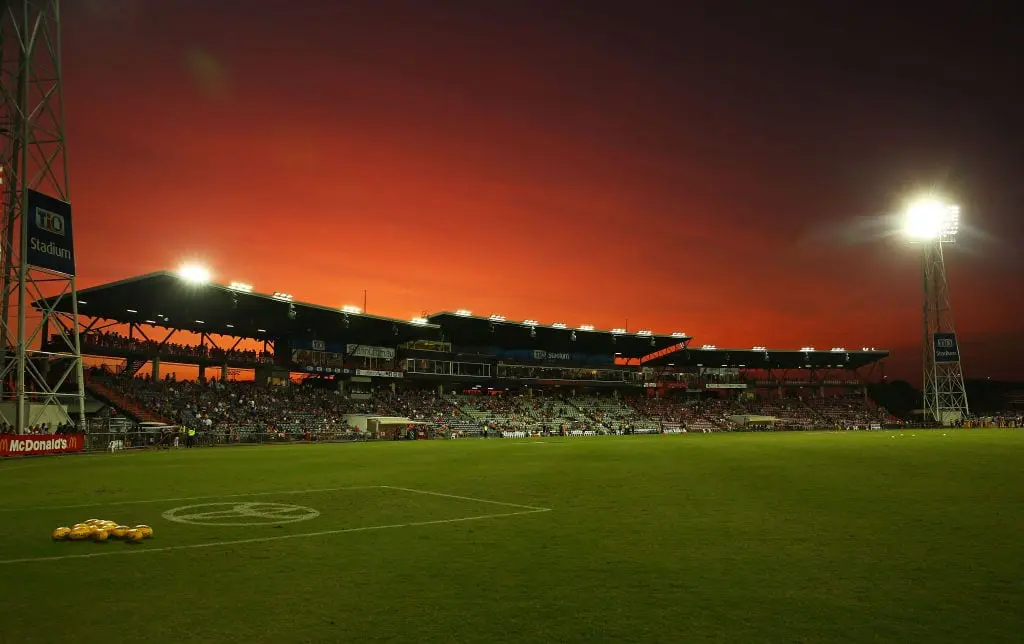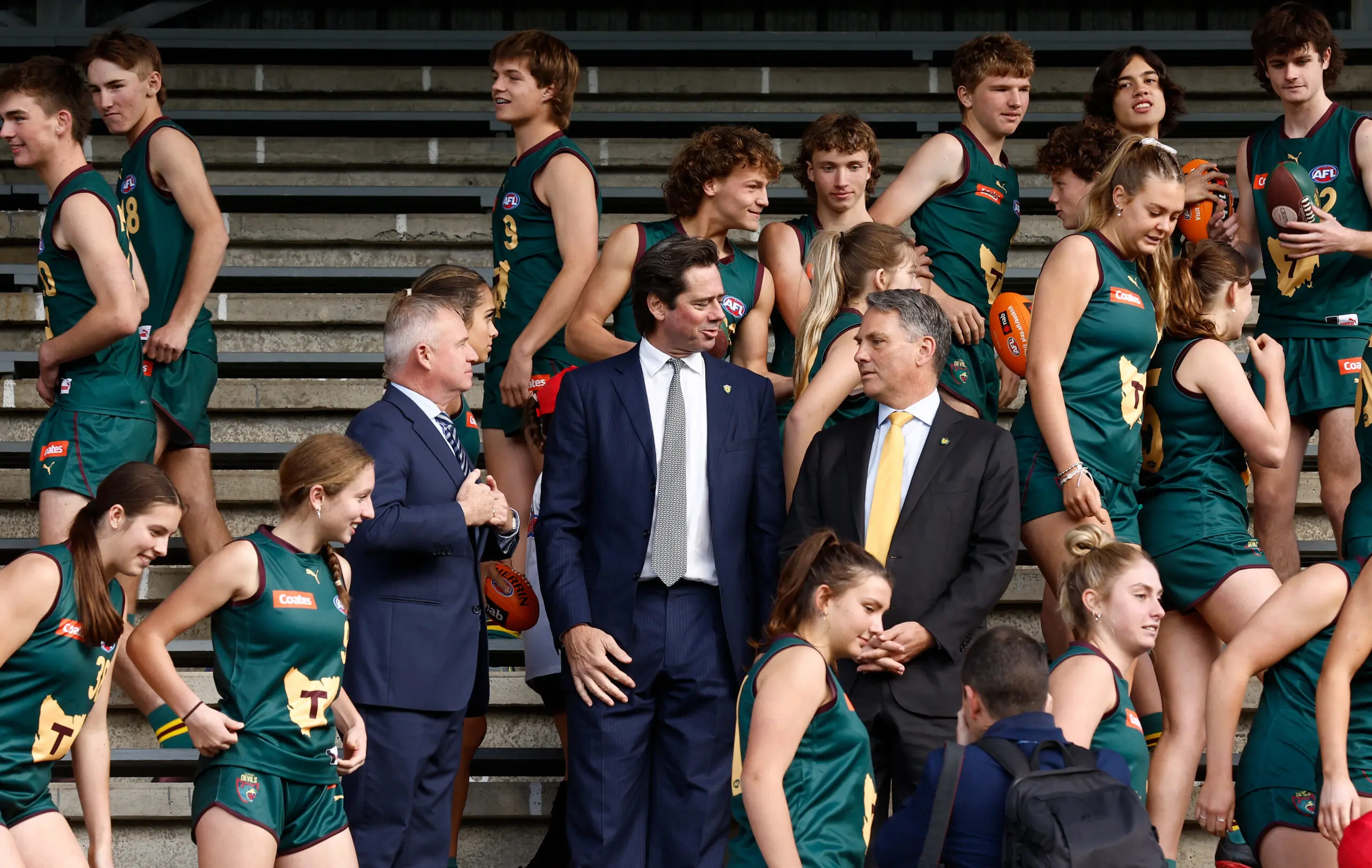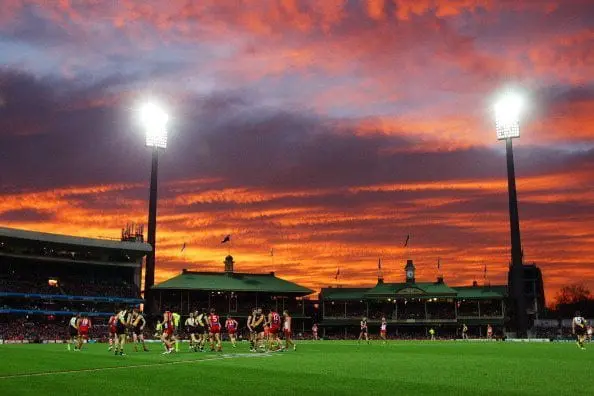Last Wednesday afternoon, the AFL officially confirmed that a license has been granted to Tasmania, introducing them as the 19th team in the AFL.
While the Apple Isle club isn't set to join the competition until 2028, their entry into the national league raises plenty of questions about what the league will look like once they join, and if the AFL will introduce a 20th team to even up the sides, once again.
The last decade and a bit has seen the AFL welcome both Gold Coast and GWS, bringing the league to 18 teams, with plenty to be said of the relative success of the two ventures.
Tasmania, however, has been advocating for a place in the national league for decades, with their first bid for a team coming in 1994. Hobart is set to host the side, with a new stadium being constructed with funding help from both the state and federal governments.
Concerns around player retention have been raised, and will surely be answered once the side enters the league, with similar stories following both the Suns and Giants throughout their short histories.

Tasmania's addition officially brings the competition to 19 teams, with one team expected to have a bye week each round.
The introduction of these bye rounds does dismiss the need for a mid-season bye, which has been a staple of the league for years. Furthermore, it does raise questions about the pre-finals bye we have all come to expect.
The pre-finals bye - held the weekend after the conclusion of Round 23 - would be a contentious issue should a top-eight side also have their bye scheduled for the final round, forcing them into two weeks off the park before September action.
Instead, the AFL may return to introducing a week off prior to the grand final. Giving the two qualified teams an extra week to prepare themselves for the biggest game of the season.
There's a fix to this fixturing issue though, the introduction of a 20th team. Even numbers would see ten games played each weekend, a return to the mid-season byes, and the AFL given the flexibility to do whatever they want with their September bye.
Where would this 20th team be? Well, there's been plenty of speculation about that. The Northern Territory looms as a likely option, with the NT and ACT now just the only two states or territories in the country without a club in the league. Canberra, though, does serve as a second home to the Giants, meaning that the NT appears the logical option for expansion.

That potential 20th team seems like it could solve a host of fixture issues for the AFL. An even amount of teams means no forced byes every round, permanent Thursday night footy could be introduced without losing a game on the weekend, and eyes on screens - and people through the gates - would ideally rise.
But can the competition viably support two more teams?
Financially, the AFL is already pouring more than $250 million into the 18 teams across the competition, with Gold Coast and GWS given around $25 million each per year.
Subsequent funding would be required to aid a further two teams, including funding essential infrastructure to get them off the ground. The AFL has already committed to spend $15 million on the new stadium, in addition to the $360 million already pledged to the team itself.

A potential team in the Northern Territory, likely in Darwin, would also require a new stadium in addition to a training and administration base, while both new franchises would likely cost the league more than $20 million each per year in AFL assistance funding.
More than that, though, are concerns that there simply isn't enough talent to support a 20-team competition.
The introduction of Gold Coast and GWS brought this issue to the forefront, with the fear of a 'diluted talent pool' seemingly becoming the argument against the new sides.
Melbourne coach Simon Goodwin dismissed those concerns following the announcement of the 19th license, but Sydney coach John Longmire was eager to remind the competition that those in non-traditional footy states still need the help of the league despite their plans to expand elsewhere.
“Tassie is a very proud football state, and I think it‘s great for the Tasmanians and I know that it will be a pretty, pretty cool team,” Goodwin said.
“I think you see the game it is now and the talent that continues to walk through our doors … there's a lot of talent out there in Australia in footy and there‘s a lot of guys that miss out on opportunities and if they are put in the right environment, they can develop into great players,” he said.
“So I think that talent won‘t be an issue. I think we still have a great game of footy as we have had for the last period of time.
“It's continued to grow our game and participation rates continue to increase and having another team in our competition is only going to do that again.”

“What we're mindful of it there is one-third of the population of Australia is in NSW yet only one per cent play AFL football,” Longmire said last week.
“Let's not take our eye off what's happening here in NSW, the most competitive sporting market in the world. I think we need to do a bit of work in that space.
“It's a challenge for us and GWS and the code in general. I think we've made some great gains ... but it's a real challenge to keep that up. It needs work and will continue to need long-term work and long term investment.
“We can't lose sight of the fact there is so much potential here in NSW that still remains untapped.
“It's great to put Tasmania in, but it's important we do things right.”
Should the AFL go to 20 teams, around an extra 80 players would be required to fill these new lists. Some pundits believe that talent is already spread too thin across the competition as it is, meaning that this addition could cause the standard of football in the league to drop in the latter half of the decade.
In a league that is seeing record attendance figures this season and ever-growing membership tallies, there's no wonder the AFL wants to invest in expansion to build the game as much as it possibly can.
The issue, though, is that we never know where the ceiling is until we hit it.
























